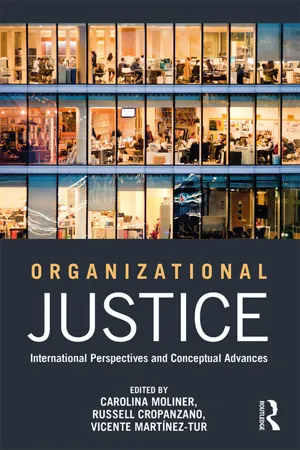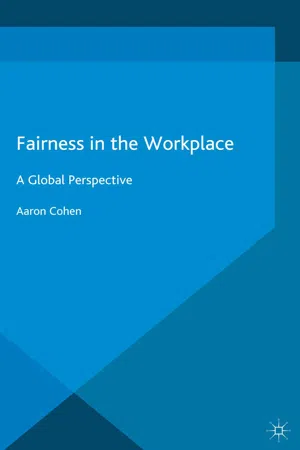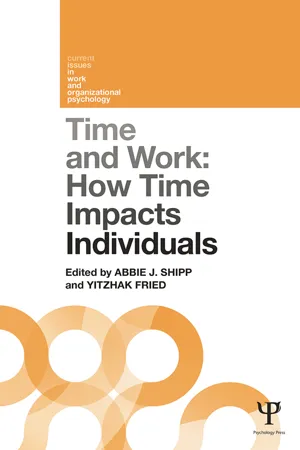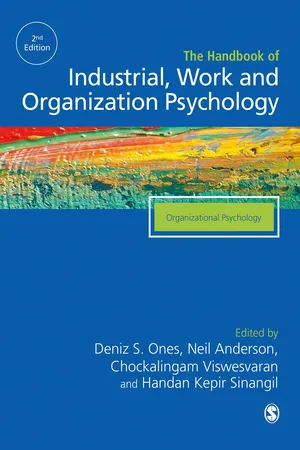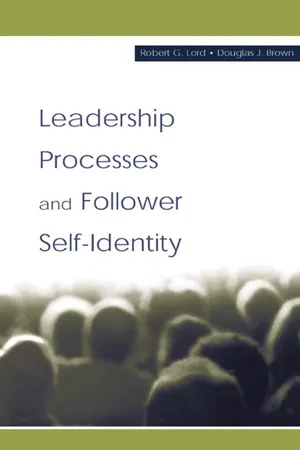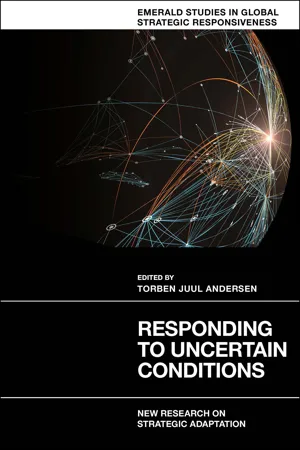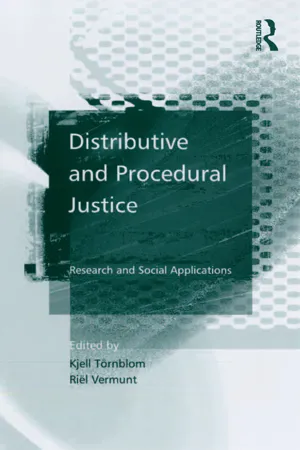Business
Organizational Justice
Organizational justice refers to the perceived fairness in the workplace, encompassing distributive justice (fairness in outcomes), procedural justice (fairness in decision-making processes), and interactional justice (fairness in interpersonal treatment). It is crucial for employee satisfaction, trust, and commitment, and can impact organizational performance and employee well-being. Organizations that prioritize organizational justice tend to have higher levels of employee engagement and retention.
Written by Perlego with AI-assistance
Related key terms
10 Key excerpts on "Organizational Justice"
- eBook - ePub
Employee Performance and Well-being
Leadership, Justice, Support, and Workplace Spirituality
- Badrinarayan Shankar Pawar(Author)
- 2019(Publication Date)
- Routledge India(Publisher)
While justice, as indicated in the preceding discussion, matters in general human life, it also matters for employees in the specific context of work organizations. Employees’ perceptions or assessment of fairness in organizations is referred to as “Organizational Justice.” Organizational Justice reflects employee perceptions of the moral appropriateness of the organizations’ actions towards them. As organizational actions are executed by managers, Organizational Justice reflects employees’ assessment of the moral appropriateness of managerial actions in an organization (Cropanzano et al., 2007, p. 35).Organizational Justice perceptions of employees are likely to be based on several decisions of distributing to them various outcomes such as incentives, pay raises, promotions, training opportunities, challenging or interesting job assignments, warnings, pay deduction, pay reduction, punitive actions, and layoffs. In considering an organization’s decision-making for the distribution of such outcomes, employees also consider the way decision makers or the organization has treated them. Thus, employee perceptions of Organizational Justice consider not only the fairness of outcomes but also the moral appropriateness of the treatment received from an organization or managers in an organization. Thus, Organizational Justice takes many forms covering the outcome and treatment aspects.Forms of Organizational Justice
Sashkin and Williams (1990) compared, within a single organization, five stores having high employee sickness and accidents compensation costs with five stores having low costs and found that the low cost stores, in general, had higher justice climate than high cost stores. This may suggest that justice climate benefits both employee well-being and the organization. Further, a review of empirical research using meta-analysis found that Organizational Justice climate of a work unit such as a team, branch, and organization has a positive association with work unit effectiveness (Whitman, Caleo, Carpenter, Horner, and Bernerth, 2012, p. 782–783). While this indicates the significance of overall justice for organizations and managers, there are multiple forms of Organizational Justice. Fairness of outcomes is referred to as distributive justice (e.g., Folger and Konovsky, 1989, p. 115) while fairness of procedures is referred to as procedural justice and fairness of treatment is referred to as interactional justice (e.g., Masterson, Lewis, Goldman, and Taylor, 2000, p. 739). Thus, three forms of Organizational Justice are distributive justice, procedural justice, and interactional justice. Each of these three forms of justice is described below. Employee-related outcomes and why different justice forms result in these outcomes are also outlined below. Prior to the detailed description, an integrated overview, summarizing the description provided in the following parts of this chapter, of various forms of justice, their employee-related outcomes, and the processes through which these outcomes are likely to occur is depicted in Figure 6.1 - eBook - ePub
Organizational Justice
International perspectives and conceptual advances
- Carolina Moliner, Russell Cropanzano, Vicente Martínez-Tur, Carolina Moliner, Russell Cropanzano, Vicente Martínez-Tur(Authors)
- 2017(Publication Date)
- Routledge(Publisher)
1Challenges for an Organizational Justice research agenda
Carolina Moliner, Vicente Martínez-Tur, and Russell CropanzanoResearch on Organizational Justice has increased in the last five decades with relevant implications for knowledge and practice. In the more than 50 years since the pioneering researcher John Stacey Adams (1965) published his seminal research facilitating the use and transfer of justice issues to the investigation and understanding of organizational life, subsequent efforts have confirmed organizations as relevant socio-technical contexts in which justice plays a critical role. Traditionally, Organizational Justice has been defined as the extent to which an aspect of the organizational environment is perceived as fair, according to a certain rule or standard (Cropanzano, Byrne, Bobocel, & Rupp, 2001). It includes the perceived fairness of received outcomes (e.g., salary) or distributive justice, the fairness of formal processes in the decision making about the distribution of outcomes (e.g., representation of parties) or procedural justice, the quality of the interpersonal treatment (e.g., dignity) or interpersonal justice, and the information provided (e.g., explanation) or informational justice (Colquitt & Rodell, 2015). Each type of justice has a significant influence on workers’ attitudes and behaviors (Colquitt et al., 2013).The impact of justice is pervasive. Today, hundreds of millions of people work around the world. Although they are embedded in different cultural values and experience very different working conditions – from situations of poverty to the sophistication of skilled workers in creative jobs – justice emerges as a set of norms underlying the decent work concept and explaining in part well-being and performance (Shao, Rupp, Skarlicki, & Jones, 2013). Organizations can become fairer and ultimately become more productive if they administer just outcomes, use just procedures, and so forth (Cropanzano, Fortin, & Kirk, 2015). Over the years, progress in research has been carried out in different directions, opening the door to new challenges for future efforts. These challenges are represented in the present book in four ways. - eBook - ePub
- E. Allan Lind, E. Allan Lind(Authors)
- 2019(Publication Date)
- Routledge(Publisher)
10 Organizational Justice is Alive and Well and Living Elsewhere (But Not Too Far Away) Joel Brockner and Batia M. WiesenfeldOrganizational Justice refers to employees’ perceptions of fairness as well as the impact of such fairness perceptions on what they think, feel, and do in the workplace (Greenberg, 1987). In their overview of historical trends in the Organizational Justice literature, Colquitt, Greenberg, and Zapata-Phelan (2005) noted that it consisted of four waves, in the following chronological order. First, the distributive justice wave focused on outcome fairness (e.g., Adams, 1965). Second, the procedural justice wave concerned itself with the fairness of the methods used by authorities to make decisions (e.g., Lind & Tyler, 1988; Thibaut & Walker, 1975). Third, the interactional justice wave centered on the appropriateness of authorities’ interpersonal behavior while carrying out decisions (e.g., Bies, 1987). Fourth, the integrative wave examined the joint and often interactive effect of various elements of fairness (e.g., Brockner & Wiesenfeld, 1996).Whereas the four waves differed in several respects, the emphasis in each was on the consequences of fairness. Having established the pervasive effects of fairness, Organizational Justice researchers have changed the paradigm in the years since the Colquitt et al. (2005) review, focusing heavily on the antecedents of fairness. Elsewhere, we referred to this shift as the “fifth wave” of Organizational Justice (Brockner, Wiesenfeld, Siegel, Bobocel, & Liu, 2015). Moreover, we provided a taxonomy to organize the many ways in which fairness has been and continues to be studied as a dependent variable. For instance, a spate of theoretical (e.g., Molinsky & Margolis, 2005; Scott, Colquitt, & Paddock, 2009) and empirical papers (e.g., Blader & Chen, 2012; Zhao, Chen, & Brockner, 2015) have sought to explain when and why managers will behave more versus less fairly. - eBook - ePub
Fairness in the Workplace
A Global Perspective
- A. Cohen(Author)
- 2015(Publication Date)
- Palgrave Macmillan(Publisher)
Part IIComponents of Organizational FairnessAs mentioned earlier, impressions of fairness are not restricted to only one possible object or experience, but rather several experiences can provide the inputs for forming evaluations of fairness. To date, studies have focused on Organizational Justice as the main or sole element involved in judgments about fairness. Indeed, many studies use the term as a synonym for organizational fairness (Cohen-Charash & Spector, 2001). While in this book the importance of the concept is not underestimated, we also argue that Organizational Justice is only one, albeit important, source for developing perceived fairness. Other experiences, which will be presented and reviewed below, are no less important than Organizational Justice. However, first, we must present the concept of Organizational Justice.What are we exactly referring to when we talk about Organizational Justice? According to Greenberg (1987), Organizational Justice pertains to the views of the organization’s members of the fairness that exists in the distribution of resources. Distributive justice refers to the perceived fairness of the allocation of resources by the organization. Members make evaluations about whether the outcomes offered by the organization, such as performance ratings, pay, and promotions, are fair given the amount of effort they have invested. These evaluations of fairness are made with respect to some kind of referent other. However, distributive justice is only one dimension of Organizational Justice. Another dimension, that of procedural justice, refers to the perceived fairness of the procedures used to determine the allocation of resources (Greenberg, 1987). For example, members may question how their raises or performance ratings were determined. When members evaluate an outcome as being unfair, they may react with poor performance, increased absenteeism and turnover, and more dissatisfaction with their salaries and jobs (Andrews & Kacmar, 2001). - eBook - ePub
Time and Work, Volume 1
How time impacts individuals
- Abbie J. Shipp, Yitzhak Fried(Authors)
- 2014(Publication Date)
- Psychology Press(Publisher)
Organizational Justice and time A review of the literature on justice reactions over time and directions for future research Irina Cojuharenco, Marion Fortin and Hayley GermanIntroduction
Organizational Justice has emerged as one of the dominant theories of work motivation (Latham & Pinder, 2005). Perceptions of fairness have been shown to increase employee commitment and satisfaction, acceptance of organizational change, citizenship behaviors, and positive evaluations of management, and decrease counterproductive and deviant work behaviors (Cohen-Charash & Spector, 2001; Colquitt, Conlon, Wesson, Porter, & Ng, 2001). Significant research progress has also been made in our understanding of the facets of Organizational Justice. Today, we are able to elicit both overall fairness perceptions (Ambrose & Schminke, 2009), and perceptions of fairness that arise specifically in relation to work outcome allocations (distributive justice), processes and procedures used to decide on the outcomes (procedural justice), and interpersonal treatment and information received during the implementation of the foregoing processes and procedures (interactional justice) (Bies & Moag, 1986; Colquitt, 2001). Facet-specific justice perceptions, such as perceptions of distributive, procedural, and interactional justice, have – despite their strong correlations with each other – been shown to differentially predict specific workplace outcomes. For example, distributive justice is known to be a particularly strong predictor of job satisfaction and withdrawal (Colquitt et al., 2001), while procedural justice has been found to exert a strong influence on organizational commitment and productivity (Viswesvaran & Ones, 2002). Interactional justice has been found to strongly impact perceptions of leader-member exchange and other evaluations of authority in organizations (Cohen-Charash & Spector, 2001). Retaliatory behaviors in the workplace have been shown to result from three-way interactions between perceptions of distributive, procedural, and interactional justice (Skarlicki & Folger, 1997). Overall fairness perceptions, on the other hand, are important mediators of the effects of facet-specific perceptions (Ambrose & Schminke, 2009). The justice literature has thus built over the last 40 years an impressive body of knowledge allowing for the diagnosis of workplace injustice and its consequences. Regrettably, much of the research progress so far has been achieved through static analysis that did not take into account possible changes in the importance of various justice perceptions over time, and did not examine temporal characteristics of justice reactions. Yet there are several reasons why understanding the temporal characteristics of justice reactions is important to both theoretical advances in the field of Organizational Justice and managerial practice. - eBook - ePub
The SAGE Handbook of Industrial, Work & Organizational Psychology
V2: Organizational Psychology
- Deniz S Ones, Neil Anderson, Chockalingam Viswesvaran, Handan Kepir Sinangil, Deniz S Ones, Neil Anderson, Chockalingam Viswesvaran, Handan Kepir Sinangil(Authors)
- 2017(Publication Date)
- SAGE Publications Ltd(Publisher)
3 Organizational Justice Stephen W. GillilandINTRODUCTION
Philosophers, political scientists, politicians, jurists, and economists traditionally have been the ones concerned with the just distribution of wealth, power, goods, and services in society. Social psychologists and their brethren … have displayed remarkably little professional interest in this, despite the fact that the process of exchange is almost continual in human interactions. (Adams, 1965, p. 267)With this observation 50 years ago, Stacy Adams (1965) sparked an interest in Organizational Justice that has continued to grow over the intervening decades and has come to represent one of the dominant theoretical orientations for understanding attitudes, emotions, and motivation in the workplace. From studies of equity in the 1960s and 1970s, to the inclusion of decision process fairness issues (i.e., procedural justice) and formal introduction of the term Organizational Justice in the 1980s, the evolution of Organizational Justice has occurred through thousands of studies in psychology and management (Colquitt et al., 2013; Greenberg & Colquitt, 2005). Contrary to when Adams wrote his seminal chapter on equity theory, organizational scholars in industrial/organizational psychology and management have demonstrated considerable interest in Organizational Justice and have written more than 2,500 papers on Organizational Justice in the past decade alone.Organizational Justice is a social construct that refers to subjective perceptions of fairness in an organizational setting (Colquitt, Conlon, Wesson, Porter, & Ng, 2001). The study of antecedents of Organizational Justice has linked organizational decisions and decision processes with employee (and in some cases third-party) perceptions of fairness (Greenberg & Colquitt, 2005). Consequences of Organizational Justice perceptions include a wide variety of work attitudes, behaviors, and emotions (Cohen-Charash & Spector, 2001; Colquitt et al., 2001, 2013). Areas of application include most areas of human resource management (e.g., Folger & Cropanzano, 1998; Gilliland & Steiner, 2012), many areas of organizational behavior (e.g., organizational citizenship behavior, Moorman & Byrne, 2005; counterproductive work behavior, Conlon, Meyer, & Nowakowski, 2005; stress, Judge & Colquitt, 2004; teams, Colquitt, Noe, & Jackson, 2002), and other areas of business (e.g., marketing, Maxham & Netemeyer, 2003; accounting, Libby, 1999; management information systems, Son & Kim, 2008). - eBook - ePub
Exploring Positive Relationships at Work
Building a Theoretical and Research Foundation
- Jane E. Dutton, Belle Rose Ragins, Jane E. Dutton, Belle Rose Ragins(Authors)
- 2017(Publication Date)
- Psychology Press(Publisher)
88 Positive Organizational Justice: From Fair to Fairer—and Beyond
Jerald GreenbergOver the past two decades, organizational scientists have devoted considerable attention to studying people’s perceptions of fairness in organizations—a concept known as Organizational Justice (Greenberg, 1987; Greenberg & Colquitt, 2005). Historically, researchers and theorists have focused attention on three major forms of Organizational Justice (Colquitt, Greenberg, & Zapata-Phelan, 2005). Specifically, these are:- Distributive justice —The perceived fairness of the distribution of rewards and resources between parties.
- Procedural justice —-The perceived fairness of the methods and procedures used as the basis for making decisions.
- Interactional justice —The perceived fairness of the interpersonal treatment accorded others in the course of communicating with them.
Despite the moniker, it may be observed that the field of Organizational Justice has emphasized not the attainment of justice per se, but the avoidance of injustice by managers and responses to injustice by subordinates. We see this with respect to all three types of justice. For example, scientists have studied responses to distributive injustices in such forms as reductions in performance (e.g., Greenberg, 1996) and increases in employee theft (e.g., Greenberg, 1990a) following inequitably low levels of desired rewards. Researchers also have studied job dissatisfaction (e.g., McFarlin & Sweeney, 1992), turnover intentions (e.g., Simons & Roberson, 2003), and noncompliance with tax laws (e.g., Wenzel, 2002) stemming from procedurally unfair work policies. Additionally, studies have assessed how violations of interactional justice in the form of rude and uncaring supervision discourages workers from following company policies (e.g., Greenberg, 1994) and encourages them to engage in various forms of retaliation against their bosses (Skarlicki & Folger, 1997), including the initiation of lawsuits against former employers (e.g., Lind, Greenberg, Scott, & Welchans, 2000). These are just a few of many examples of attention to the negative side of justice that may be found in the literature (for overviews, see Colquitt & Greenberg, 2003; Greenberg & Colquitt, 2005). - eBook - ePub
- Robert G. Lord, Douglas J. Brown(Authors)
- 2003(Publication Date)
- Psychology Press(Publisher)
justice interchangeably. Justice perceptions have important ramifications for organizations through their relationships with various organizational attitudes and behavioral outcomes. Some of these outcomes include trust and satisfaction in leaders (Peterson, 1999; Pillai, Schriesheim, & Williams, 1999; Tyler & Caine, 1981), organizational citizenship behaviors (OCBs) (Moorman, Blakely, & Niehoff, 1998; Skarlicki & Latham, 1996), reactions to selection procedures and decisions (Ployhart & Ryan, 1997; Ployhart, Ryan, & Bennett, 1999), performance appraisal (Cawley, Keeping, & Levy, 1998), and workplace retaliation (Skarlicki & Folger, 1997; Skarlicki, Folger, & Tesluk, 1999). This partial listing of organizationally relevant outcomes shows the importance of justice considerations in organizations. Moreover, focusing on Organizational Justice helps to illustrate the applied relevance of the theoretical framework that we developed in this book.TYPES OF JUSTICE
The notion of justice has intuitive meaning for most individuals, yet researchers have shown that there are several facets to Organizational Justice. A two-factor approach to Organizational Justice has distinguished between distributive and procedural justice. Distributive justice focuses on whether outcomes are consistent with norms for outcome allocation (e.g., equity or equality; Colquitt, 2001), whereas procedural justice pertains to the fairness of the methods used to produce outcome distribution decisions. Distributive and procedural justice are each important in their own right, yet as we discuss in a subsequent section, considerable research suggests that they also interact (Brockner & Wiesenfeld, 1996), with high procedural justice compensating for low outcomes.Although the two-factor approach to Organizational Justice has been useful, Bies (2001) and Bies and Moag (1986) argued that the nature of the interpersonal treatment one receives from another person reflects a third type of justice—interactional justice. Moreover, because leaders often interact directly with subordinates, interactional justice should be particularly important for understanding leadership processes. Bies (2001) provided extensive evidence showing that people can distinguish interactional from procedural justice. More interestingly, he linked interactional justice to one’s sense of self, that is, one’s self-identity. Indeed, we argue that each of the three types of Organizational Justice are linked to one’s self-identity and that it is through an understanding of the self-identity issue that leaders can affect particular justice perceptions. - eBook - ePub
Responding to Uncertain Conditions
New Research on Strategic Adaptation
- Torben Juul Andersen, Torben Juul Andersen(Authors)
- 2023(Publication Date)
- Emerald Publishing Limited(Publisher)
Bridoux and Stoelhorst (2022 ) also emphasize this idea of value co-creation or, as they refer to it, “joint value creation,” arguing that “a fair distribution of value is one, if not the, core attribute of managing for stakeholders” (p. 224).Organizational Justice and Stakeholder Theory
Several authors within stakeholder theory emphasize the importance of Organizational Justice in stakeholder management models and use previous concepts of Organizational Justice to build their premises. Phillips (1997; 2003 ) viewed stakeholder theory as an opening to develop a theory of organizational ethics, which is based on the stakeholder principle of equity. This principle enables organizations’ duties and obligations to their stakeholders to be based on the principle of fair play and contribution.To this extent, for Phillips (1997; 2003 ), the stakeholder should receive results that correspond to its contribution to the creation of value in the system from the company, that is, the more the stakeholder contributes, the more value it should receive. A fair distribution is not just an equitable distribution, because, by the principle of fairness, stakeholders should receive according to their contribution (1997; 2003 ). Furthermore, fairness is not only about the equitable contribution of outcomes, but also covers how the distribution is made (Bosse et al., 2009 ). Thus, the concept of equity addressed by Phillips (2003 ) is similar to the concept of Organizational Justice, which will be further substantiated in subsequent theoretical work.Expanding on the subject, Bosse et al. (2009 ) propose a stakeholder management model based on principles of Organizational Justice. Organizational Justice is presented in three dimensions: distributive, procedural, and interactive. Distributive justice refers to the distribution of outcomes to the various stakeholders according to an attribution standard. Procedural justice refers to the rules and procedures for the attribution decision process. A process is considered fair when it is consistent, founded on accurate and clear information. Finally, interactional justice refers to how actors interact. Interactions that are considered fair are based on courtesy, dignity, respect, and appropriate sharing of information (Bosse et al., 2009 - eBook - ePub
Distributive and Procedural Justice
Research and Social Applications
- Kjell Törnblom, Riël Vermunt(Authors)
- 2016(Publication Date)
- Routledge(Publisher)
2 Studies have shown that people also react to their perceptions of the interpersonal treatment they receive from authorities, called interactional justice (e.g., Bies and Moag, 1986). When authorities are interactionally just, that is, polite, kind, show respect, they convey a message that the people affected by the decisions are significant and worthy. Tyler and Bies (1990), however, subsequently included interactional justice as the informal aspect of the general concept of procedural justice. See also Cropanzano et al. (2001) for a discussion of this controversy.Passage contains an image
Chapter 8The Talk of Negotiators: Shaping the Fairness of the Process and Outcome1
Karen A. HegtvedtEmory University, USALabor and management come to some agreement over a wage-benefit package after several lengthy, vicious rounds of bargaining. A mixed-age group of children divide up a bag of candy in a way that benefits the younger children. Those youngsters, however, still think that the division is unfair because the older children had teased them mercilessly about having any candy at all. A couple discusses how to spend their income tax return. Each expresses concern with what the other wants. They end up deciding to splurge on a weekend at the beach, which the wife had wanted, and to wait to build the deck, which the husband wanted, until next year. Both think the decision to go to the beach is fair.These examples focus on the negotiation of benefits. Because of general beliefs in the value of giving people the opportunity to voice their interests and to compromise with others (i.e., procedural justice), people usually perceive negotiated outcomes as fair (i.e., distributive justice) (Hegtvedt and Cook, 1987). Yet, as these examples illustrate, what is perceived as fair may depend upon the nature of what is said during the negotiations.2
Index pages curate the most relevant extracts from our library of academic textbooks. They’ve been created using an in-house natural language model (NLM), each adding context and meaning to key research topics.

